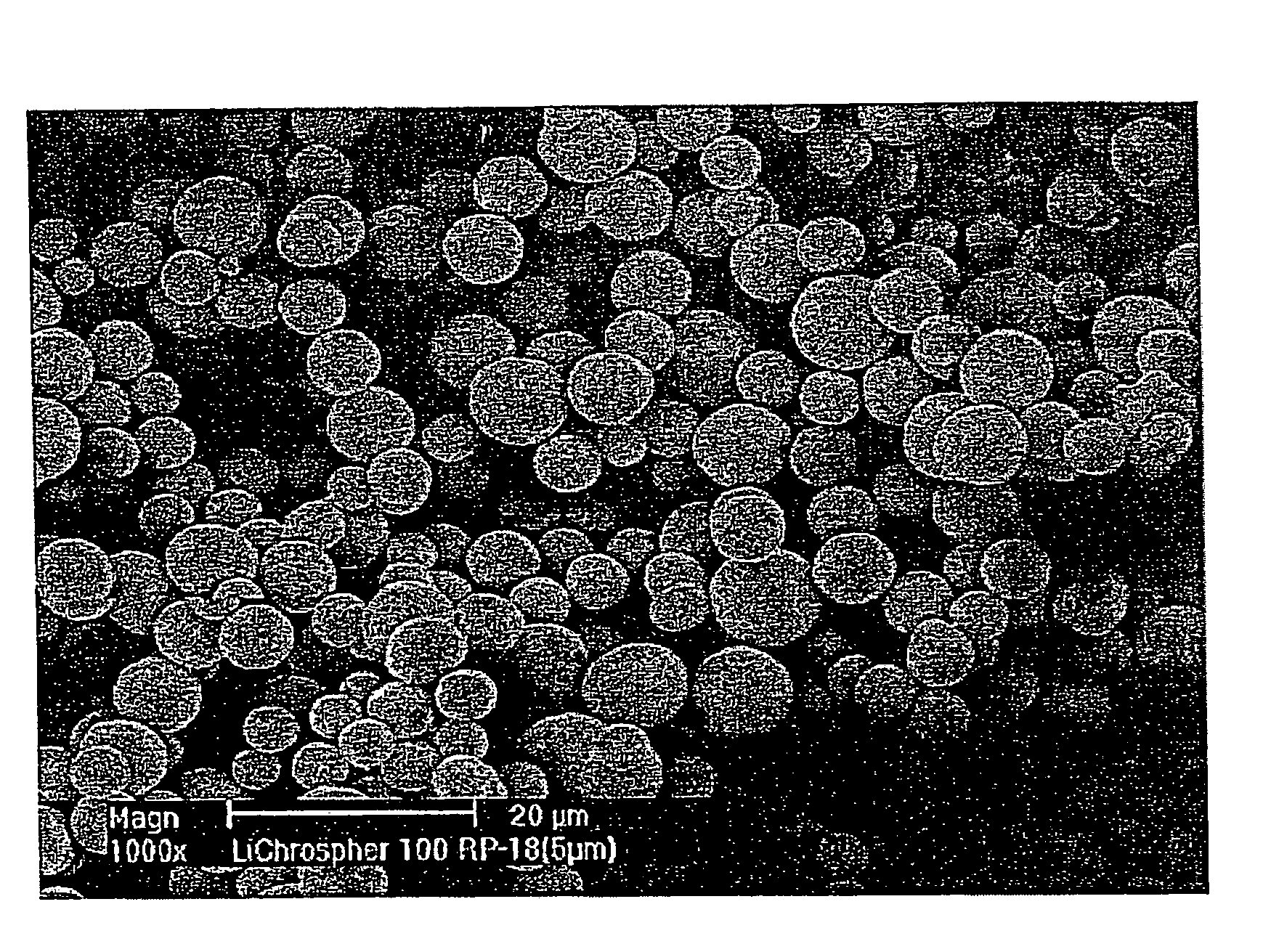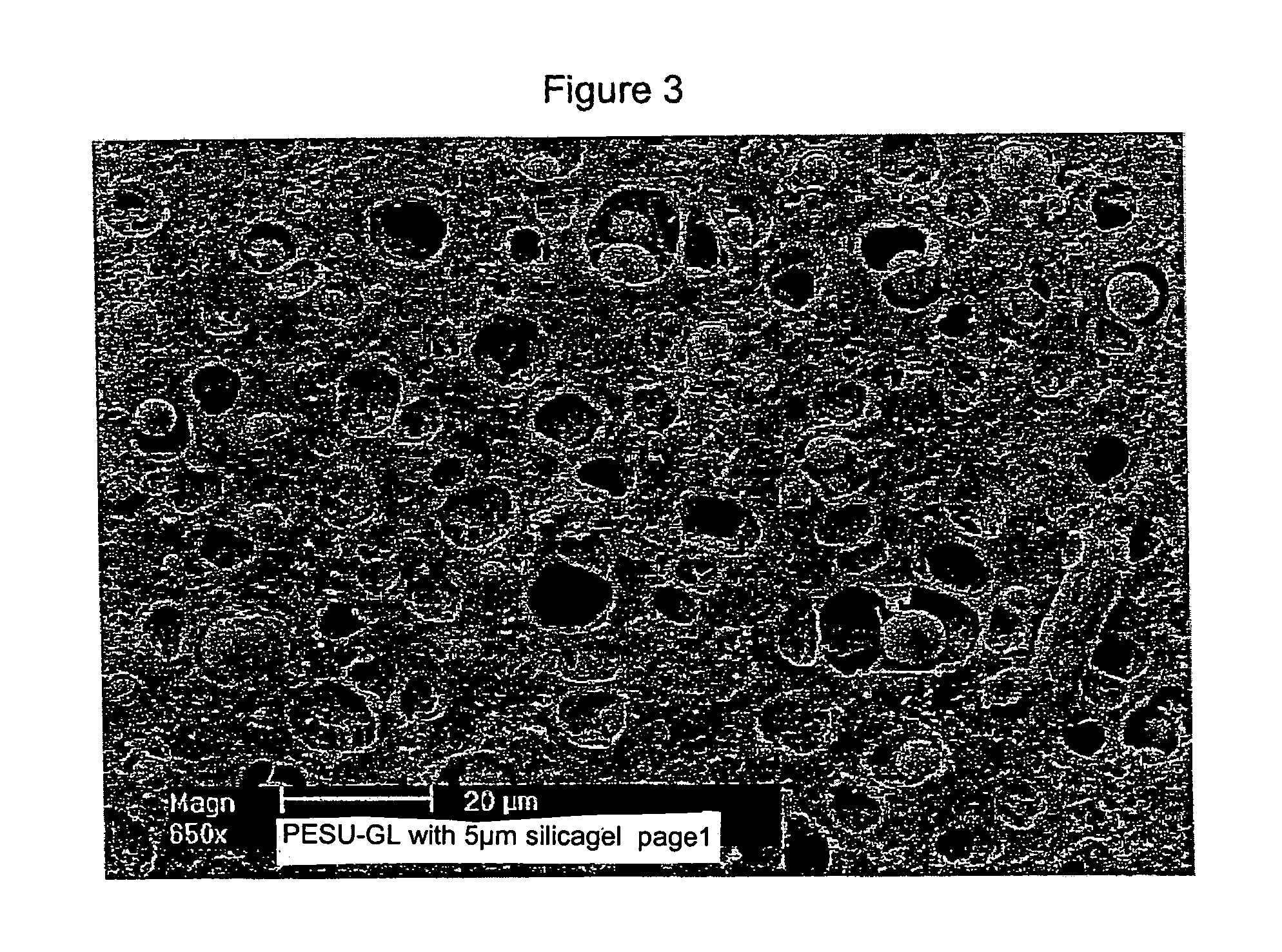Adsorption membranes, method of producing same and equipment, including the adsorption membranes
a technology of adsorption membrane and adsorption membrane, which is applied in the field of adsorption membrane, can solve the problems of negative analytical effect, unavoidable deleterious edge effects, and complex adsorption with the corresponding adsorbent, and achieve the effect of high separation capacity
- Summary
- Abstract
- Description
- Claims
- Application Information
AI Technical Summary
Benefits of technology
Problems solved by technology
Method used
Image
Examples
example 1
[0052]Production of a microporous polyether sulfone membrane loaded with hydrophobic ligands containing silica particles as filler
[0053]A casting solution having the following composition was prepared: 81.8% 2-pyrrolidone, 11.5% polyether sulfone E6020, 4.7% water and 2% glycerol (86.5%) were dissolved while stirring at 50° C. for eight hours. A mixture of 90% of this solution and 10% of a silicic acid material containing C18 ligands from the company Merck in Darmstadt (order no. 1.116177, lot L448077 234) was prepared by agitating at 600 rpm for 30 minutes at 30° C. using a propeller stirrer. In addition, this casting solution was degassed for 24 hours in a vacuum of 150 mbar. This degassed casting solution was shaped to yield a microporous membrane with a thickness of 150 μm by means of a drawing device in an aqueous precipitation bath. After obtaining approx. 1000 cm2 of a microporous structure, the piece of membrane was washed with PBS and stored at 4° C. in PBS.
example 2
[0054]Manufacturing centrifugal units with the inventive membrane from Example 1
[0055]Filter rounds 3 mm in diameter made of an inventive membrane from Example 1 were installed in centrifugal units developed as experimental products under the name Microspin Columns by the company Vivascience AG, Hannover and were secured by a well-fitting insert. The units had an effective filter area of 3.1 mm2. The units are referred to below as RP-18 Microspins.
[0056]Example 3
[0057]Concentrating bioactive peptides with RP-18 Microspins
[0058]The following bioactive peptides were obtained from SIGMA Deisenhofen:
[0059]Bradykinin fragments 1–7 (order no. B-1651, lot 41K13641)
[0060]Angiotensin II fragments 1–7 (order no. A-9202, lot 21K5122)
[0061]Angiotensin II (order no. A-9525, lot 31K51144)
[0062]These are listed in tabular form in Table 1.
[0063]
TABLE 1Molecular weights and amounts of bioactive peptides used.DesignationMWTotal Amount1:10Bradykinin 757 Da*12 pg16 pmol1.2 pg1.6 pmolfragments 1–7Angiot...
PUM
| Property | Measurement | Unit |
|---|---|---|
| thickness | aaaaa | aaaaa |
| diameter | aaaaa | aaaaa |
| particle sizes | aaaaa | aaaaa |
Abstract
Description
Claims
Application Information
 Login to View More
Login to View More - R&D
- Intellectual Property
- Life Sciences
- Materials
- Tech Scout
- Unparalleled Data Quality
- Higher Quality Content
- 60% Fewer Hallucinations
Browse by: Latest US Patents, China's latest patents, Technical Efficacy Thesaurus, Application Domain, Technology Topic, Popular Technical Reports.
© 2025 PatSnap. All rights reserved.Legal|Privacy policy|Modern Slavery Act Transparency Statement|Sitemap|About US| Contact US: help@patsnap.com



